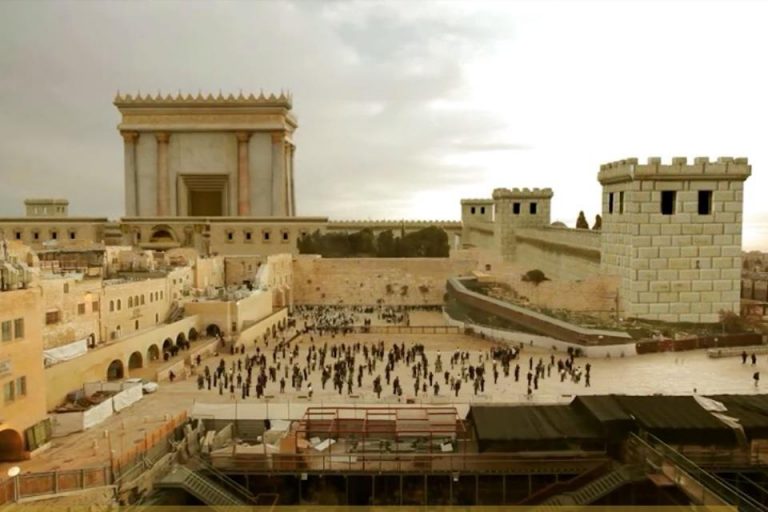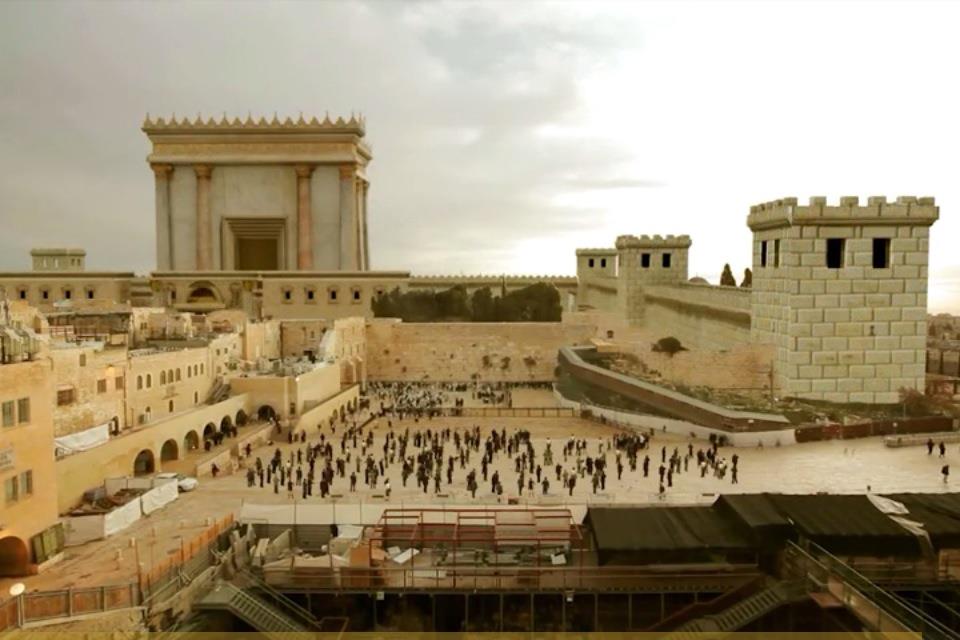The Haftarah of the second day of Sukkot details the dedication of the Beit HaMikdash (the Temple) by Shlomo Hamelech. The Haftarah narrates the final preparations for sanctifying the Beit HaMikdash, explaining that the Aron Ha-Kodesh (Holy Ark) was brought by the Kohanim into the Kodesh Hakodashim (Holy of Holies), after which Hashem’s cloud filled the chamber, indicating that the Shechina (Divine Presence) now dwelled therein. Thereafter, Shlomo explained the original conception and history of the planning of the Beit HaMikdash.
Why do we read this Haftarah on Sukkot? It is true that the Beit HaMikdash was dedicated as part of a 14-day assembly which ran through Sukkot; so, too, the Beit HaMikdash is referred to as “Sukkat Dovid” – the Sukkah, or Tabernacle, of David. Still, these connections between Sukkot and the Haftarah about the dedication of the Beit HaMikdash are rather coincidental. Is there any deeper relationship between Sukkot and the Haftarah?
 Sukkot is positioned shortly after Yom Kippur, such that after becoming purified on Yom Kippur, we merit entry to the sukkah, which represents a venue of God’s glory. The Hoshana of “E’eroch shu’i” depicts this theme, and it is well-established in halachic and aggadic literature. If we view the relationship of Sukkot and Yom Kippur through this perspective, it becomes clear that Sukkot is a yom tov which needs the spiritual preparation of Yom Kippur in order to have full meaning.
Sukkot is positioned shortly after Yom Kippur, such that after becoming purified on Yom Kippur, we merit entry to the sukkah, which represents a venue of God’s glory. The Hoshana of “E’eroch shu’i” depicts this theme, and it is well-established in halachic and aggadic literature. If we view the relationship of Sukkot and Yom Kippur through this perspective, it becomes clear that Sukkot is a yom tov which needs the spiritual preparation of Yom Kippur in order to have full meaning.
Thus, to answer to our question, the relationship of the Haftarah to Sukkot is the theme of preparation. The Haftarah details the preparations for Hashem’s Presence to rest in the Beit HaMikdash, and – similarly – our experience of Sukkot and entry to the sukkah depend on the spiritual preparation of Yom Kippur.
It must be noted that this preparation for Sukkot is not just practical; rather, it is part of the very essence of Sukkot. Just like the Biblically-mandated sequester of the Kohen Gadol before Yom Kippur is an integral part of the purification process (as it purifies the Kohen Gadol, who is the instrument for public purification on Yom Kippur), so, too, is the preparation provided by Yom Kippur essential to Sukkot. Without it, our observance of Sukkot would be incomplete.
There is a second component of spiritual preparation for Sukkot. One must be mentally prepared for the experience of entry to the sukkah, such that he appreciates its holiness and what it represents. (Some poskim hold that an awareness of the symbolism of the sukkah is critical to fulfilling the mitzvah of dwelling in a sukkah). One cannot instantly appreciate being enveloped by holiness. Experiencing kedusha (holiness) is not something that one can do “al regel achat” – on the spot. When an angel spoke to Shimshon’s mother to inform her that she would finally have a baby, instructing her as to his special care (as a nazir), Shimshon’s mother knew that the speaker was an angel. However, when Manoach, Shimshon’s father, met the same angel, he invited the angel to eat and asked the angel his name, as if the angel were a person. The Tanach relates that Manoach was unaware that the visitor was an angel.
One can be in the Presence of God and not even know it. Sukkot teaches us that one must be prepared to encounter the Divine, for without spiritual preparation, a sukkah is a mere hut; with proper preparation, the sukkah becomes a reflection of the Beit HaMikdash, may it be built again soon.
